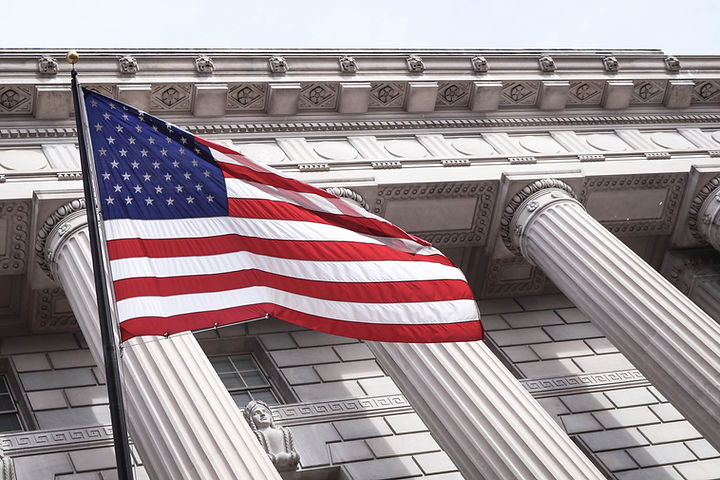April 17th, 2021 | by Linda Moss Mines | Copyright © 2021

The concept of a monumental tribute to local men who had died in the fight "to make the world safe for democracy" led to the idea of building a "memorial" auditorium in Chattanooga. The organizing committee requested Chattanooga City Attorney Frank S. Carden draft an act authorizing the sale of $400,000 in bonds, obtained the approval of the mayor and board, and delivered the drafted resolution to the legislative delegation serving in Nashville.
The delegation, Sen. Finney T. Carter and Reps. C.E. Lynn, J.O. Martin and L.D. Miller, introduced the bill in both houses on Jan. 29, 1919, and pushed it to speedy passage. The approved act called for a referendum election by the voters of the city of Chattanooga.
Five weeks later, on March 11, 1919, the measure passed with a vote of 3 to 1 in favor.
A Memorial Auditorium Commission, required by the legislative act, was chosen by city government and given the authority to select plans and oversee the building and equipping of the structure. D.A. Landress, George H. Patten, Fred M. Dearing, M.B. Ochs and Z.W. Wheland were appointed to the committee, and they met officially for the first time 10 days later, choosing Wheland chairman and Patten secretary. Their first decision as a committee was to hire an architect with "a vision" and, after a national search, R.H. Hunt was chosen.
The committee then began a search for the ideal construction site. Plots on Broad Street, McCallie Avenue and near the city municipal buildings were considered. Citizens were invited to attend public meetings where the merits of each site could be debated. Following community input, the city purchased a plot of land for $100,000, owned by James A. Caldwell, on the north side of McCallie Avenue and extending along Lindsay Street to a frontage on Oak Street.
Now that a site had been purchased, the design process could proceed. The commission wanted the proposed Soldiers and Sailors Memorial Auditorium to be a "state of the art" structure that could serve all civic and arts organizations. They spent more than a year, at their own expense, visiting civic centers across the nation, seeking input from the governing authorities.
After compiling a checklist of features and researching the costs, they realized that the $300,000 available would be insufficient to fund community needs. The mayor and city commissioners agreed to "procure additional funds so that the task might be adequately performed."
A mass meeting was announced for March 29, 1921. After the proposed functions and requirements of the building were discussed for several hours, citizens concluded an additional $300,000 should be committed to the project. Sen. Eugene Bryan and Reps. Hays Clark, Charles E. Lynn and D.M. Coleman, the 1921 legislative delegation, hurriedly carried the amendment to the original enabling act to the Tennessee General Assembly, where it passed promptly.
Again, the legislation required public approval, and an organized public awareness campaign began. A special Chamber of Commerce committee was created to advocate for the additional funds, chaired by F.E. Mahoney with T.C. Thompson vice chairman and members E.E. Brown and S.O. Bankson. What had begun as an idea to honor those who had died in the Great War had truly become a mission to "memorialize" their sacrifice.
Civic and community leaders wrote letters to the editor and spoke in community centers and churches across the city. James F. Finley and Frank A. Nelson of the Rotary Club and D.H. Griswold and O.P. Darwin of the Chattanooga Kiwanis Club joined with Francis Walton and Z.H. Taylor of the Optimist Club and C.W. Loftin and J.J. Wall of the Civitan Club to get out the vote. Alfred Law, J.B. Steele and Fred Ballard of the American Legion joined the effort and spoke eloquently of the need to honor the service and sacrifice of the fallen.
The Chattanooga Music Club, led by J.O. Cadek, Mrs. J.L. Meek and Miss Mollie Kavanuagh of the Kosmos Club, also represented by Mrs. M.N. Whitaker and Mrs. H.R. Lacey, and The Chattanooga Woman's Club's Mrs. R.J. Miller and Mrs. C.G. Walline, organized a campaign aimed at Chattanooga women who had recently obtained the right to vote. Members of the Business and Professional Women's Organizations, Sarah M. Postlethwaite, Elinor Coonrod, May C. Hall and P.J. Allen, signed up to offer assistance.
The campaign was on.

Linda Moss Mines, the Chattanooga-Hamilton County historian, is a member of the Tennessee Historical Commission and regent, Chief John Ross Chapter, NSDAR.
Contributed photo / This page from the dedication program of the Soldiers and Sailors Memorial Auditorium features photographs of Chattanooga Memorial Auditorium Commission members G.H. Patten, Fred Dearing, Z.W. Wheland, D.A. Landress and Milton B. Ochs.


Comments